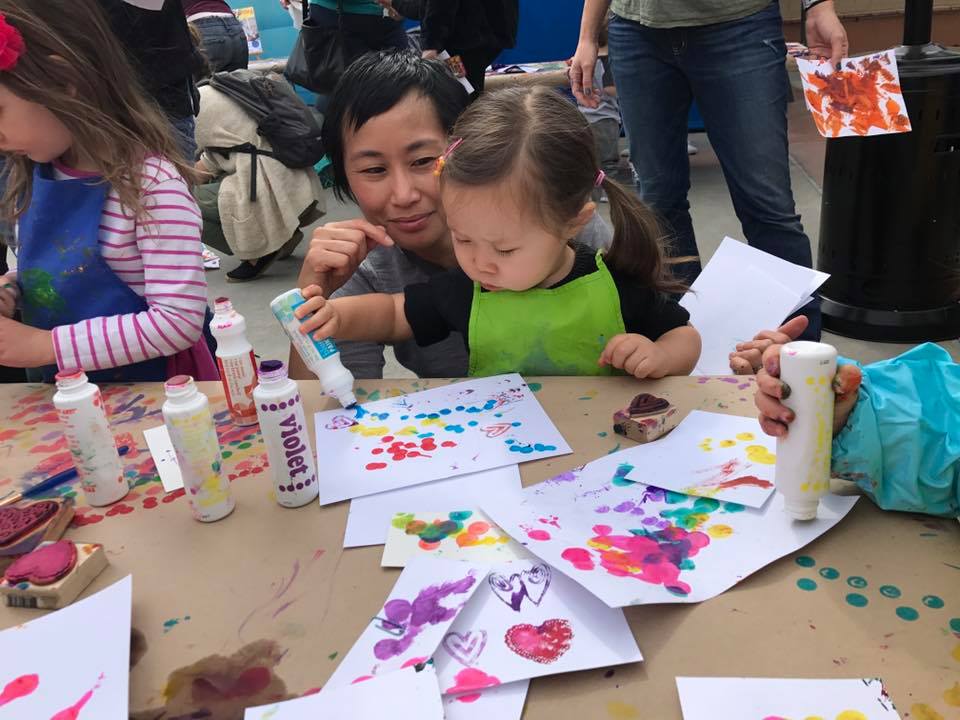
Sensory Tactile Art is Positive For Kids
By Spramani Elaun
It’s becoming increasingly important for young children to have sensory tactile experiences in their younger years. Creating and building art projects is a perfect way tactile sensation can take place for kids. Almost all art making requires using direct sensory touch to construct, build or express. Tactile learning can be described as learning through touching with one’s own hands.
Without tactile opportunities a child can miss out on important spatial learning. Sensorimotor movement provides vital information for the developing nervous system. Learning and creating through touch helps with brain connectivity that can’t come from just sight and hearing sensory systems. I recommend children have lots of experiences touching and feeling through tactile type art making projects.
In the book Nurturing Children In The Visual Arts Naturally © I dedicate a whole chapter to this topic. Here’s a free passage from the most up-to-date book on how children develop visual art skills.
Book Excerpt:
Sensory ability, cognition and fine motor control are all linked together. Our sensory system includes vision, touch, scent, hearing and taste. This system plays a vital role in how we gather information from our environment. Collected sensory information is transmitted neutrally to our brain networks. Our different networks are always communicating; this can also be explained as cognitive processing. This type of cognitive processing is beneficial for deep learning and comprehending. (Chapter 11. Nurturing Children In The Visual Arts)

Tactile Learning By Sensory Touch
Tactile learning can be described as learning through touching with one’s own hands. When a child touches an object, messages of information are sent through sensory nerves to the brain. Tactile sensory sensations can help young children learn and understand ideas. Visual art learning can happen from direct sensory touching by hands. Tactile art making stimulates learning in different ways than visual or audio learning. For a developing child, tactile exploring can also lead to better fine motor function and control. Tactile learning is recommended for highly active children or kinesthetic learning styles. These types of children learn better by physical action and tactile sensations. Visually impaired children greatly benefit by tactile learning sensations. A child’s manipulations or artwork are their understanding from tactile experiences.

My recommendations for tactile art activities
• Clay Modeling – pressing, squeezing, pressing soft clay
Clay Modeling – pressing, squeezing, pressing soft clay
• Coloring & Doodling (How-to prepare | Art Doodle coloring station)
• Finger Painting – fingers, hands
• Painting – making brustrokes (Order Early Childhood Paint Curriculum)
• Sponge Stampers – Dipping sponges into a palette and making marks
• Potato stamping – Potato Stamp Blog
• Collage – Ultimate Montessori Art Collaging Guide
• Cutting – Ultimate Scissor Cutting Guide
• Wet-felting with hands
• Sewing and touching natural fabrics
• Mossaic designs with beads, stones or small embellishments.

Nontoxic Art Supplies Only Recommended!
Tactile art projects involve touching art supplies directly with bare hands so I highly recommended only use non-toxic art supplies.
I always recommend young children under 12 years old only use child grade art supplies.
A young child’s immune system is not as strong as the immune system of an adults.
A young child may not be able to defend against coming into contact with toxic substances like an adult can.
It’s important to understand art supplies can be ingested, absorbed or inhaled accidentally.
Many professional art supplies on the market can contain toxic ingredients which requires special care and instructions and usually intended for adults only.
Be sure art products are made specifically for young children, this will protect their health in the long run.
Art Making in Early Childhood Can Build Brain Intelligence – Motion and Movement Benefits


All rights reserved © 2024, Nature of Art®

No part of this blog may be used or be reproduced in any manner whatsoever including reproducing, publishing, performing, and making any adaptions of the work – including translation into another foreign language without written permission except in the case of brief quotations embodied in critical articles and reviews. Nature of Art® Publishing P.O. Box 443 Solana Beach, California 92075.



Pingback: Sensory Tactile Art For Young Children | Eco Kids Art, Spramani Elaun()
Pingback: Teaching Art to Young Children, Classroom visual art curricula | Nurturing Children In The Visual Arts Naturally - Books Author()
Pingback: Playing with clay can relieve stress for kids - Art making activity, Spramani Elaun art teacher - EcoKidsArt.com()
Pingback: Playing with clay can relieve stress For children | Nurturing Children In The Visual Arts Naturally - Books Author()
Pingback: Kids Art Projects, Playing & Modeling Clay Can Relieve Stress For Children, art teacher Spramani Elaun - EcoKidsArt.com()
Pingback: Crayon Resist - Wax repels H2O! - EcoKidsArt.com()
Pingback: Your Child’s Brain on Art, fine motor and tactile art making helps cognitive processing | EcoKidsArt()
Pingback: Tactile Systems | buyerofstructuredsettlementannuity.com()